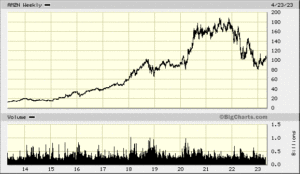Law of Large Numbers
I wrote this early yesterday but forgot to post it. Over the decades we have seen numerous examples of companies with a new product or within a new i ndustry grow and grow for years, some even for decades. Eventually, they become so large and their growth slows either because of competition, technological change, management mistakes or a combination of all of them. In many cases the company loses their momentum and the stock declines. Others are able to continue to make money but no longer grow at a rapid rate and morph into a mature yield play. Many try to find new areas of growth or go thru spinoffs and or acquisitions looking to recapture some semblance of growth. Over the last two years I have commented on a number of these especially Amazon. I correctly predicted and explained that their decade long first mover advantage in the industry they created, cloud computing, was coming to an end as aresult of competeition from Microsoft and Alphabet and a few smaller players. It was a great run. I explained that all of the growth and profit that propelled Amazon stock for all these years was AWS and everything else Amazon does was either a money loser or just another regular business with lots of competition and average to less than average profit margins. The cloud is still growing, but at much slower rates, and the profit margins are much lower because clients have at least three major providers to choose from. Amazon releases their earnings today and the stock should continue to head lower. If not immediately then soon enough. While Amazon is a perfect example of the Law of Large Numbers, they aren’t the only reason for this post. Another very large company has also been growing for decades, but while they too are about to experience a similar situation, they are going in a different category of large growth companies who have experienced the Law of large Numbers. More on that other company next week. 